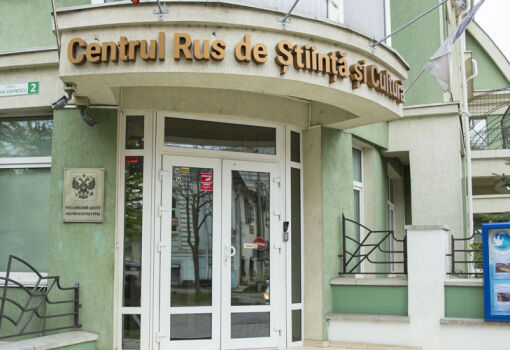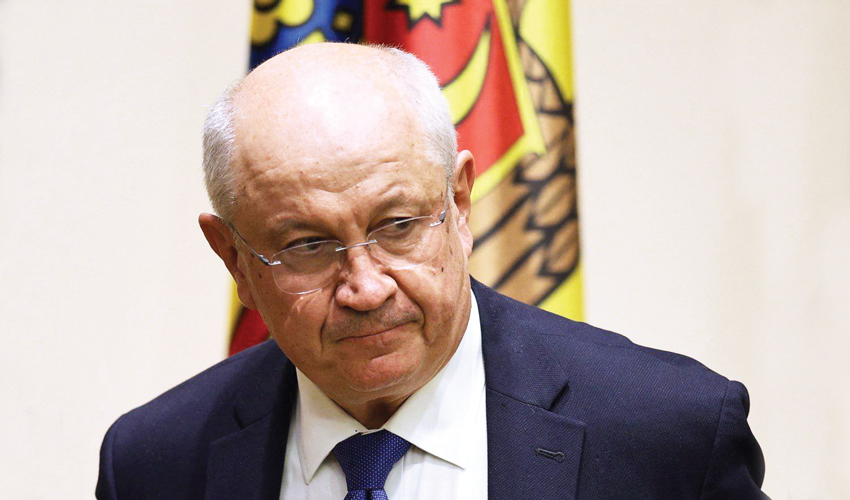
Valeriu Sainsus
This year, on April 1, pensions were indexed by 10% – applying the indexation coefficient to the part of the pension not exceeding the average monthly wage level in the economy for 2025 in the amount of 16,100 lei.
Also, according to the law on the state pension system, the size of pensions increased by a fixed amount as of April 1. It is determined by multiplying the average pension by 50% of the GDP growth for the previous year, expressed in comparable prices. The GDP growth in 2024 as compared to 2023 amounted to 0.1%, and the average pension, as of 01.01.2025 – 3835,86 lei. Accordingly, the increase by the fixed amount of pensions from April 1, 2025 amounted to 1.92 lei.
Revenues and expenditures of the state insurance budget for 2025 were approved in the amount of 46,513,720.1 thousand lei, including transfers from the state budget in the amount of 17,948,497.8 thousand lei. When forecasting the state social insurance budget expenditures for 2025, the indexation of pensions and other social payments was planned with an indexation coefficient of 6.1 per cent, not 10 per cent. Therefore, the government requested the parliament to adjust the budget. In February, the EC decided to amend the law on the state social insurance budget for 2025, according to which its revenues and expenditures were also increased by 1 billion 150.6 million lei (+2.5 per cent) to 47,664,320.1 thousand lei
Presenting the draft law on pension indexation in February, Marina Morozova, PAS deputy, said that since 2021, when the PAS party came to power, the minimum pension has increased by 157%, while the cumulative inflation for 3 years amounted to 60%. Accordingly, the pension increase is more than double the inflation rate.
“Already in the first months of the mandate, on October 1, 2021, we increased the minimum pension to 2000 lei. In 2022, the minimum pension rose to 2278 lei, in 2023 – to 2620 lei, and in 2024 it reached 2778 lei. As for the average pension – it increased from 2000 to 4000 lei. According to the law on the state pension system, the pension is indexed annually on April 1, while the indexation coefficient corresponds to the inflation rate of the previous year. The 10% indexation means above the inflation rate for 2024, which amounted to 6.9%. We are not just covering inflation, but also further increasing pensions – this is a measure that not only protects the purchasing power of pensioners, but also represents a meaningful support for the elderly,” said Marina Morozova
As Doina German, Vice-President of the Parliament (PAS), calculated, from 2011 to 2021, the pension increased by only 54 lei per year: “It would take us another 34 years to reach the current level of the minimum pension of 3055 lei.
The average pension today is 4,407 lei. A law was also adopted to raise the minimum pension to 3,300 lei for pensioners with more than 40 years of service.
The opposition criticizes the indexation of pensions by 10%, saying that the state never compensated for the “under-indexation” of previous years, when inflation exceeded 30%.
Diana Karaman, a BCS MP, noted for Logos Press, “Even with all the figures presented, the purchasing power and living standards of pensioners have significantly decreased. The vast majority of them have utility bills that account for more than half of their monthly income. Indexation is only a restoration of income to the previous year’s level, taking into account price increases. Raising and indexation are different things. During the period when inflation reached 30%, indexation amounted to only 15%, which contradicts the current legislation. Thus, the state still owes pensioners 5%”.
Radu Marian, PAS deputy, still believes that it is an increase: “Indexation is when they make an increase at the level of inflation for the previous year. Last year’s inflation was 6.9%. We have increased by 10%,” he commented.
The Constitutional Court recognized the “underindexation” of 2023 as legal. Then the opposition filed a request to check the constitutionality of the PAS government’s decision to index pensions from April 1, 2023 by 14.4%, not 33.8% – the inflation rate at the end of the previous year. “The contested norm does not infringe the essence of the right to a pension for its holder, but only establishes a reasonable reduction of the indexation factor for 2023 in the conditions of a fixed financial deficit,” the CC ruled.
Former Finance Minister Mariana Durlesteanu says that the authorities have not proposed a real pension reform that would ensure a sustainable system:
“The purchasing power of pensioners has sharply decreased, especially against the background of rising prices of essential goods (food, energy, medicines). The PAS government justified insufficient indexation by budget constraints and the state public budget deficit, but did not apply real corrective measures”.
BCS MP Cornelius Furculuica is also sure that systemic changes are needed: “The right to a decent pension, which allows the pensioner to provide for himself/herself, is a constitutional right. The amount of pension should be calculated based on many indicators, such as the consumer basket, purchasing power and others. We do not have this. And after this amount is fixed, which ensures a decent life for all pensioners in accordance with the rights enshrined in the Constitution, the pension should be indexed annually depending on inflation indicators. Thus, the purchasing power of the established pension will be automatically adjusted annually. This is a constitutional mechanism that should run like clockwork and politicians should not interfere with it. But politicians arrogate to themselves the right to manage public money. Meanwhile, this is a legal procedure that must be followed every year.”
The retirement age in Moldova has been rising progressively since 2017, from 62 years and 4 months for men and 57 and a half years for women to the current 63 years for men and 61 and a half years for women. Under the PSRM government, the increase in the retirement age was stopped. The current government brought back this law. This means that starting in 2028, both men and women will retire at 63.
Valeriu Sainsus, PhD in demography, associate professor (ASEM), considers this a rational measure against the background of a moderate increase in life expectancy of the Moldovan population over the last decade. Although this indicator remains modest compared to life expectancy in European countries. In a comment for Logos Press, he noted:
“At present, we have a chance to adapt the system by raising the retirement age, first of all by increasing it and equalizing it for men and women. In developed countries, aging is seen as a challenge, as an opportunity and not as a problem. The difference is that the Republic of Moldova aged before it became a developed country – this is the difference in the European context”.
In his opinion, demographic aging is much faster than the adaptation of the system to the new demographic realities of the country. Also, the retirement age is rising faster than life expectancy itself. The pandemic has lowered this figure; according to the 2024 census, it is estimated at 71.6 years. In addition, it would be more correct to evaluate changes in the retirement age through the indicator of life expectancy in retirement, where the ratio of 2-3 years of contributions to the pension system for every year spent in retirement is considered fair. Currently, this ratio is not observed, especially among the male population, where life expectancy is only 67.0 years.
Valeriu Sainsus says that indexation is certainly a measure, but its effect is felt mainly for the generations approaching retirement age. The other generations are actually left out of this measure, as their future pensions depreciate much faster than indexation. Additionally, indexation does not take into account seasonal fluctuations in the prices of goods and services.
“I believe that a much more sustainable measure would be indexation linked to an indicative currency, which would provide long-term protection for people who have a pension as their only source of livelihood. The increase in pensions in recent years has been noticeable in numerical terms, but the devaluation of the national currency has occurred in parallel, which only confirms that the real purchasing power of pensions has remained at the same level and has not improved the living standards of pensioners,” Valeriu Sainsus emphasized.
At the same time, he considers that the current formula for calculating pensions is much more adequate compared to previous periods and that it reflects the value of years worked and pension contributions in a much more sustainable way. Although he notes a number of significant shortcomings: elite pensions, which consume a significant part of the pension budget; the gap in the size of pensions between men and women, estimated at 10-15%; low pensions with full length of service, which in fact means that the state has condemned the citizen to poverty; failure to take into account maternity leave as a significant contribution of women to the demographic development of the country; delaying the introduction of the third level of pension reform (private pension savings).
According to economic expert Veaceslav Ionitsa, it would be ideal to index pensions depending on the growth of wages, which almost every year exceeds the inflation rate:
“When pensions grow only in line with inflation, unfortunately, you are only preserving purchasing power, but not increasing prosperity. No government has been able to achieve this. Because we don’t have the money. If before there were three workers for one pensioner, now it’s almost one to one”.
The number of recipients of old-age pensions has increased by 21,555 in the last ten years. According to the National Social Insurance Fund, as of July 1, 2025, the total number of recipients of pensions, social benefits and compensations is 671,597, of whom 530,062 receive old-age pensions. There are almost twice as many women as men among them. On December 31, 2023, according to NBS data, the number of workers in the Moldovan economy was 733,305. And, yes, that’s almost 1 worker to 1 pensioner. Earlier, Minister of Labor and Social Protection Alexei Buzu said that in order to have a sustainable pension system, we need at least one pensioner for every three working people.
The share of total expenditures of the state social insurance budget in GDP was equal to 10.3% in 2019, 11.7% in 2020, 11.2% in 2021, 12.4% in 2022 and 12.8% in 2023. The share of expenditures related to social benefits increased from 7.3% in 2019 to 9% of GDP in 2023 (source: NCSS, “Cifre și Reaizări 2019-2023”).













